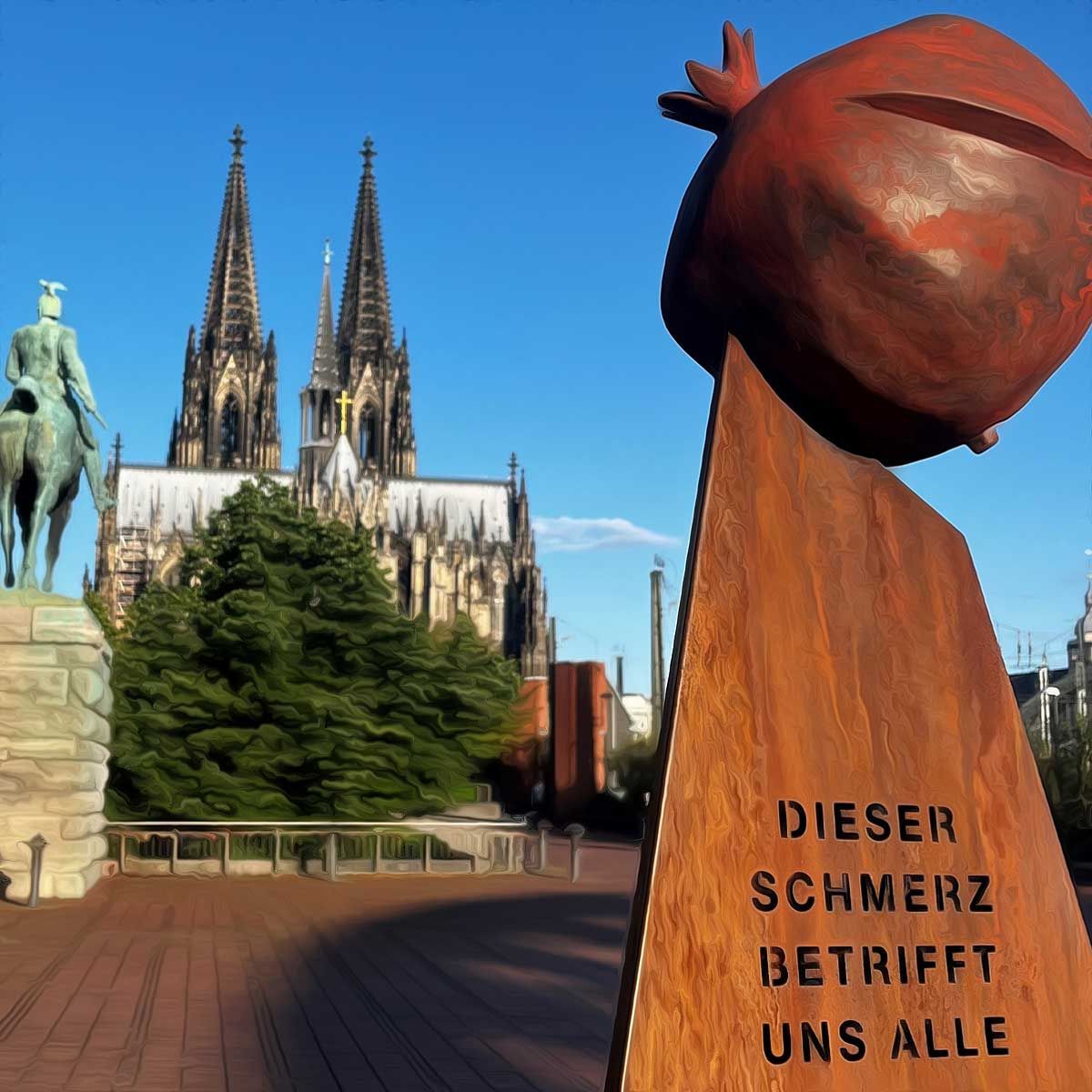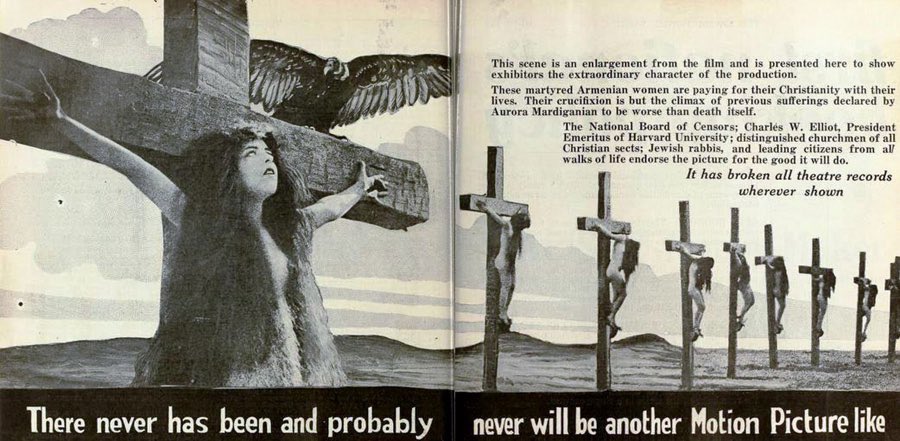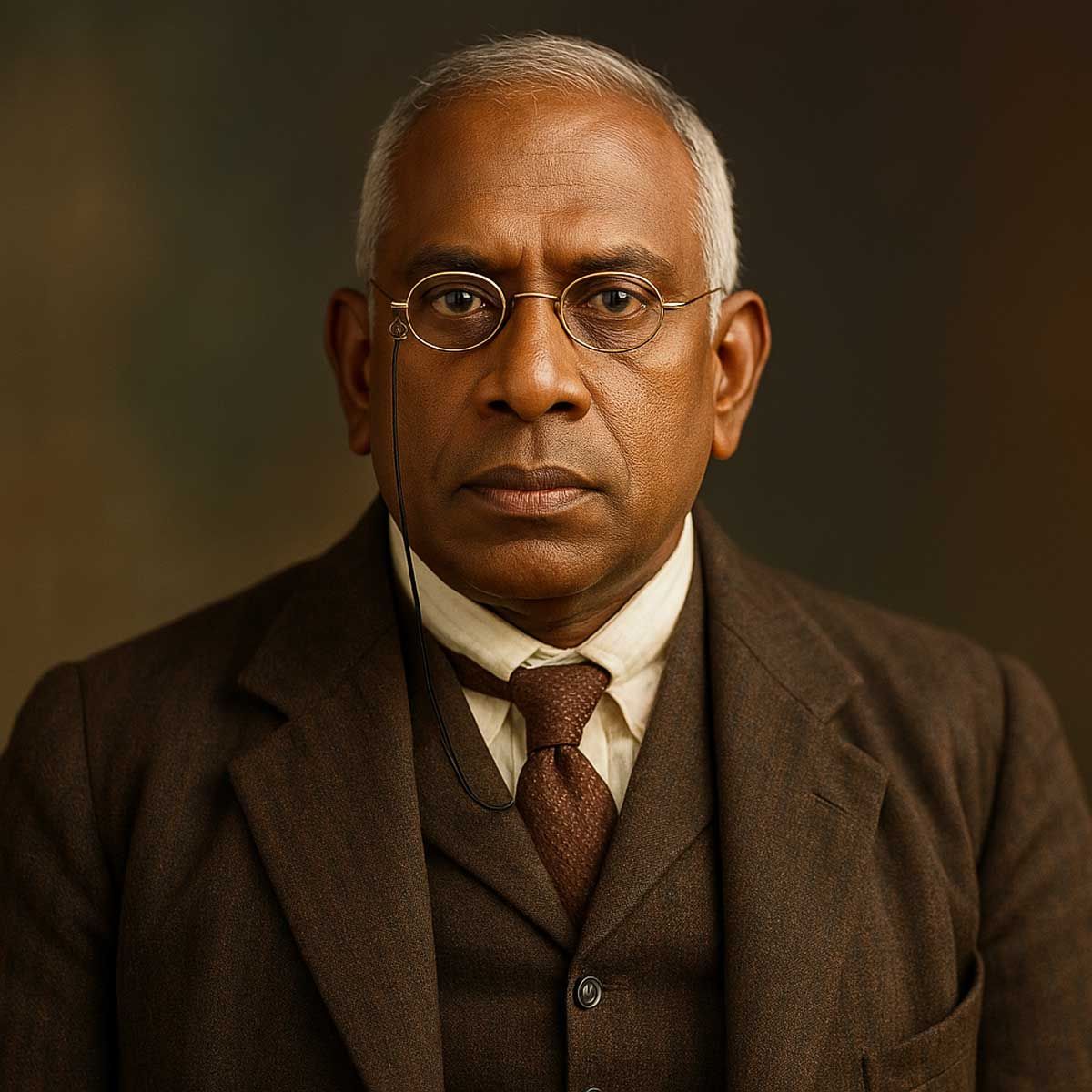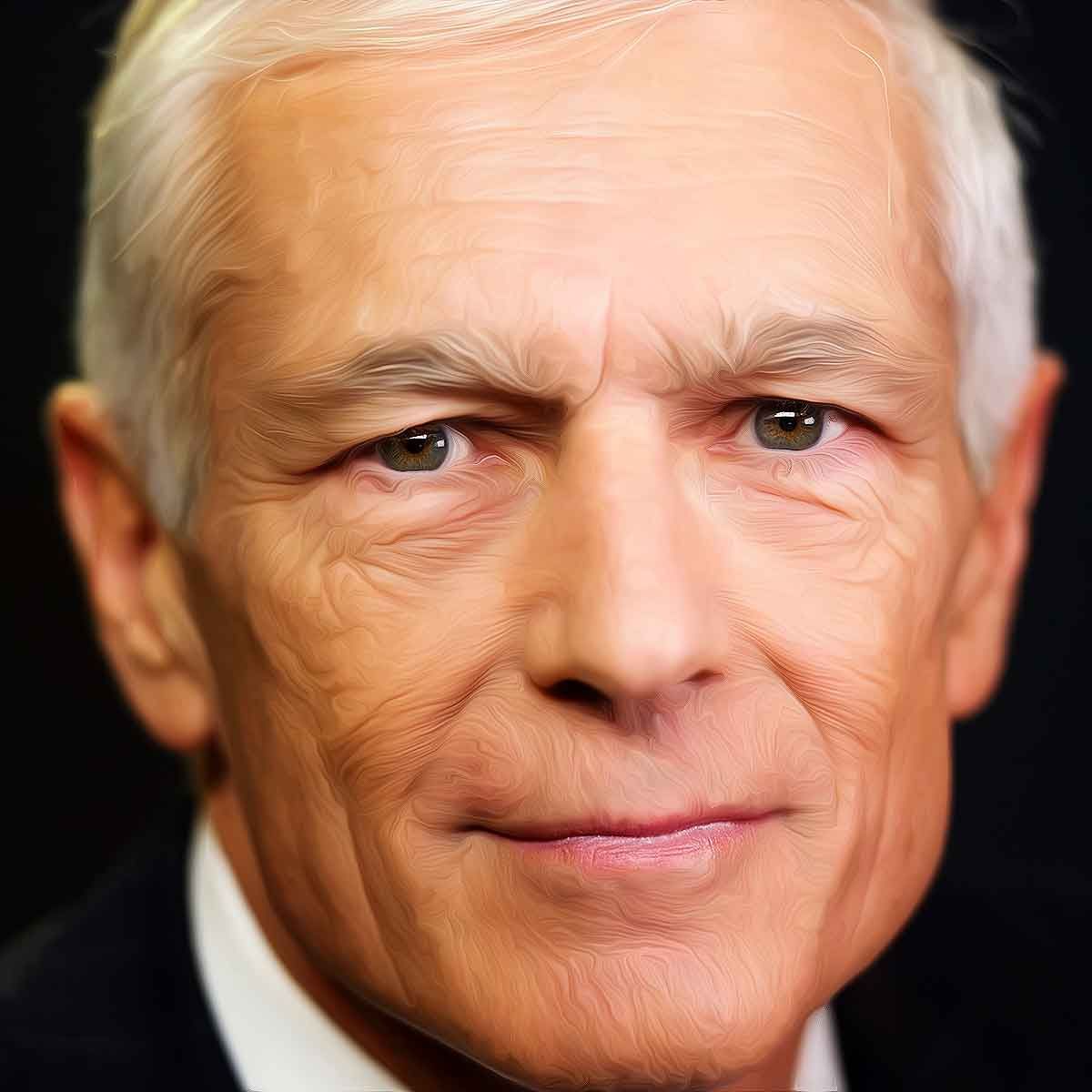MORE COVERAGE
Twitter Coverage
Satyaagrah
Written on
Satyaagrah
Written on
Satyaagrah
Written on
Satyaagrah
Written on
Satyaagrah
Written on
JOIN SATYAAGRAH SOCIAL MEDIA
"गुस्ताख़ बे अदब": Oops! The City Council of Cologne succumbs to the pressure of Turkish Muslim migrants; Goodbye, Armenian Genocide memorial; Welcome, new dance routine – the 'Diversity Waltz,' while History takes a backseat in this cultural shuffle!

In a contentious move that has sparked debate and condemnation, the City Council of Cologne in Germany has opted to dismantle the memorial dedicated to the victims of the Armenian Genocide. This decision, laden with implications, has set the stage for a crucial meeting scheduled for December 7, 2023, where officials will deliberate on the possibility of erecting a new monument. However, the proposed new memorial aims to commemorate a broader spectrum of victims, encompassing oppression, racism, violence, and human rights violations.
|
The heart of the matter lies in the city council succumbing to the pressure exerted by a significant demographic – the 60,000 Turkish Muslim migrants residing in the city, a population that significantly outnumbers the mere 6,000 Armenians living in Cologne. The removal of the Armenian Genocide memorial reflects a capitulation to the denial propagated by Turkish Muslims concerning the tragic events that unfolded from 1915 to 1918, during which Armenian Christians suffered genocide at the hands of the Ottoman Empire.
The ongoing conflict surrounding the acknowledgment of the Armenian Genocide intensifies the gravity of this decision. The refusal to recognize historical atrocities not only perpetuates discord but also raises questions about the prioritization of one community's sentiments over the acknowledgment of a historical truth. As the controversy unfolds, it underscores the challenges faced by multicultural societies in reconciling differing perspectives on sensitive historical matters.
In a turbulent saga spanning from its initial installation in 2018 to the recent decision by the City Council, Cologne's Armenian Genocide monument has been embroiled in controversy. Commemorating the centenary of the Armenian genocide, the monument was first erected on the left bank of the Hohenzollern Bridge, directly across from the equestrian statue of Kaiser Wilhelm II.
The turbulence began when, in May 2022, the monument faced dismantlement, with no permanent relocation in sight. The decision to remove the statue was met with vehement opposition, primarily spearheaded by Turkish Muslims, from the very moment of its inauguration. The persistent backlash from this community signaled a clash of narratives and historical interpretations, setting the stage for a prolonged and unresolved debate.
|
While the city cited reasons such as the planned construction of a cycle path and concerns about potential "social upheaval" for the initial removal of the monument, its journey didn't end there. The statue underwent a series of removals and restorations, highlighting the city's struggle to reconcile the divergent sentiments surrounding it. The repeated removals also underscore the ongoing tensions and the difficulty of finding a middle ground in acknowledging historical events that carry deep emotional weight for different communities.
The final blow to the Armenian Genocide monument came after a demonstration by Turkish Muslims in Germany at the end of October 2023. This event proved to be the tipping point, leading to the ultimate decision by the city council to permanently dismantle the memorial. The recent demonstration not only intensified the existing discord but also brought to light the challenges faced by local authorities in navigating the delicate balance between freedom of expression and historical sensitivity in a multicultural society.
Standing at a height of approximately 1.80 meters, the steel sculpture that once graced the left bank of the Hohenzollern Bridge carried profound symbolism. At its zenith, a bronze pomegranate with a distinctive notch served as a poignant symbol, intricately linked to the Armenian genocide. The three-sided pyramid, with its symbolic peak, encapsulated a visual narrative that transcended its physical dimensions.
The inscription on the monument, titled "This Pain Affects Us All," added a layer of eloquence to the steel structure. Expressed in Armenian, German, Turkish, and English, this multilingual inscription was a deliberate choice, echoing the universal nature of the pain inflicted during the Armenian genocide. The intentional inclusion of languages spoke to the broader message of shared humanity, emphasizing the collective responsibility to remember and prevent such atrocities.
|
Erected in April 2018 under the banner of the Cologne initiative "Remembering Genocide," the monument held a dual purpose. It stood as a testament to the solemn remembrance of the Armenian Genocide that unfolded during World War I (1915-1918). Beyond remembrance, the monument sought to raise awareness about the historical events and acknowledge the culpability of the Ottoman Empire in the systematic displacement, deportation, and murder of over a million Armenian women, men, and children.
The monument's role extended beyond a static commemoration; it served as a dynamic symbol, advocating for the prevention of future genocides. Its deliberate placement and design aimed to foster an ongoing dialogue, prompting reflection on historical injustices and the imperative of preventing their recurrence. The removal of such a powerful symbol raises questions about the challenges posed to historical remembrance and the delicate balance required in navigating divergent narratives within a multicultural society.
|
In the theatrics of cultural compromise, Cologne's Mayor Reker, the director of this unfolding drama, justified dismantling the Armenian Genocide memorial, claiming the city must consider the "diverse interests of our pluralistic urban society." In this tragic comedy, the protagonist, a once-sturdy monument, is ousted to make way for a seemingly inclusive, but questionably amorphous, commemoration.
The Turkish Muslim community, now the acclaimed playwrights of this narrative, staged their protests in October, a powerful act in their repertoire. Cologne, it seems, is surrendering its historical identity at the altar of "diverse interests." The script, alas, bears an uncanny resemblance to past productions. In 2005, Brandenburg removed the Armenian Genocide from its curriculum, bowing to the influence of Turkish diplomats. The University of Stuttgart, in 2011, followed the trend, asserting a decision to "remain neutral" in the face of Turkish protests.
In this farcical tale, Germany's cultural resilience takes a backseat as the city council pirouettes to the tunes of external pressures. The notion of preserving one's cultural roots is traded for a performative nod to diversity. A monument that once stood tall, bearing witness to historical truths, is now relegated to the annals of political expediency.
|
As the curtains fall on Cologne's Armenian Genocide monument, a satirical encore unfolds. The need for nuanced approaches, we are told, is paramount in this multicultural spectacle. Yet, one can't help but wonder if the scriptwriters have mistaken compromise for capitulation, and if the city's cultural narrative is being edited in the name of inclusivity. In this tragicomedy, the city of Cologne grapples not only with a missing monument but also with the repercussions of a narrative shaped by external influences rather than an unwavering commitment to its own cultural identity.
Imagine a story where Germany's rich cultural heritage faces a tough situation. Back in 2014, people got upset about a play by Edgar Hilsenrath called "Das Märchen vom letzten Gedanken." The play aimed to talk about a sad event called the Armenian genocide, but not everyone was happy about it.
In this story, a theater in Constance, which usually celebrates art and culture, gave in to pressure. They thought the poster for the play was too much, so they took it down. Before each show, they even read a statement from the Turkish consul. It felt like the drama of politics was taking over the stage, and artistic freedom was pushed to the side.
When the play finally started, it wasn't just about lights and actors. The theater needed police protection because things got really tense. This showed that the story of our culture was being influenced by outside pressures. Instead of being a place for free expression, the play got mixed up in politics, making people wonder if artists in Germany can really speak their minds without interference.
In this ongoing story, it seems like Germany's cultural identity is caught in a tricky situation. Theaters, once known for freedom of expression, now seem to have to follow diplomatic rules. Even premieres need police protection. As the country deals with the aftermath of yet another compromise, we can't help but wonder if the stage is set not for cultural growth but for a confusing story where artists have to bow to outside pressures, leaving Germany's cultural identity hanging in the balance.
|
The Armenian Genocide
The Armenian Genocide stands as a dark chapter in history, marked by a series of systematic killings that targeted the minority Christian population during the rule of the Ottoman Muslims in the region of Armenia. This horrendous event ranks among the most brutal state-sponsored genocides witnessed in the 20th century.
Typically, when we talk about the Armenian Genocide, we're referring to a sequence of massacres that took place against the Armenian Christian population. These atrocities were orchestrated by officials of the Ottoman Empire and unfolded from 1915 onwards. The genocide itself spanned from 1915 to 1923, claiming the lives of an estimated 1.5 million Armenian Christians, along with other minority Christian groups.
The roots of this tragedy can be traced back even before 1915. In April 1909, the city of Adana experienced a devastating event that foreshadowed the broader horrors to come. It revealed the deep-seated prejudice of the Ottoman Empire against the Christians under their rule. The incident marked an ominous branding of an entire population as enemies of the state, leading to a tragic and horrific mass murder on an unprecedented scale. This precursor event in Adana serves as a chilling precursor to the larger tragedy that unfolded during the Armenian Genocide.
 |
 Support Us
Support Us
Satyagraha was born from the heart of our land, with an undying aim to unveil the true essence of Bharat. It seeks to illuminate the hidden tales of our valiant freedom fighters and the rich chronicles that haven't yet sung their complete melody in the mainstream.
While platforms like NDTV and 'The Wire' effortlessly garner funds under the banner of safeguarding democracy, we at Satyagraha walk a different path. Our strength and resonance come from you. In this journey to weave a stronger Bharat, every little contribution amplifies our voice. Let's come together, contribute as you can, and champion the true spirit of our nation.
 |  |  |
| ICICI Bank of Satyaagrah | Razorpay Bank of Satyaagrah | PayPal Bank of Satyaagrah - For International Payments |
If all above doesn't work, then try the LINK below:
Please share the article on other platforms
DISCLAIMER: The author is solely responsible for the views expressed in this article. The author carries the responsibility for citing and/or licensing of images utilized within the text. The website also frequently uses non-commercial images for representational purposes only in line with the article. We are not responsible for the authenticity of such images. If some images have a copyright issue, we request the person/entity to contact us at This email address is being protected from spambots. You need JavaScript enabled to view it. and we will take the necessary actions to resolve the issue.
Related Articles
- "वालेकुम अस्सलाम": A Saudi doctor, Taleb Al-Abdulmohsen, drove into Magdeburg's Christmas market, killing 2, injuring 60, raising security concerns as 92.1% of crime hikes in Lower Saxony were linked to migrants under Merkel’s open-border policy
- "Europeans will succumb to Islam": Former top German spy Hans-Georg Maaßen exposes an anti-German agenda, unveiling a disturbing prophecy of Muslim majority in Europe by 2200, raising questions about democracy and cultural transformation
- "ता-क़यामत कर्बला": 9 Bangladeshi women, arrested for illegal stay in India along with a local woman who sheltered them, highlighting the rising Islamization and violent crimes, including the drugging, kidnapping, torture, and rape of Hindu girls by them
- Amid an unprecedented migrant influx, Elon Musk warns of New York City 'buckling under the load', Mayor Adams declares a humanitarian crisis, urging the Biden administration for aid as shelters near capacity and costs spiral to a staggering $12 billion
- New Fatwa issued by Beemapally Jamaat Mosque in Thiruvananthapuram, warns non-Muslim traders of strict action if they don't cooperate with processions taken out by Islamist terrorists: Raj Bhavan march against the Uniform Civil Code
- From joining ‘farmers’ protest to converting Rohingyas for Indian citizenship: How Christian groups have exploited the pandemic
- "डॉन है अपुन": In Vikasnagar's bustling market, Islamic street vendors Adil and Aman attacked Hindu boy Neetu Chauhan, sparking a massive protest by over 100 Hindu organization members and forcing police intervention to restore order amidst growing chaos
- Moplah Genocide of the Malabar Hindus, 1921: Thousands of Hindus slaughtered
- Videography of Gyanvapi Mosque to go ahead today amid tight security: Mosque committee in Varanasi had earlier opposed the survey, said 'no non-believer will be allowed to enter the mosque
- Mob of frenzied Islamists blocked National Highway in Bengal connecting Howrah and Kolkata over Prophet remarks, burn tyres resulting in traffic woes and public inconvenience, CM Mamata requests them to do it in UP or Gujarat
- Why Hindus not claiming their temples back from the Government control: Is pro-Hindu govt will always be in power
- Miles2Smiles Foundation seeking donations to help ‘victims’ of the anti-encroachment drive in Jahangirpuri: Previously raised funds for illegal Rohingya Muslim immigrants settling in the country
- "दीन-ओ-ईमान": In UP's Gonda, Mohammad Arif and Mohammad Rizwan arrested for the brutal gang rape of a minor Hindu girl in a moving car, which ended in a crash; police recovered the vehicle, exposing Arif's lie about borrowing it for a fictitious funeral
- Hindus documented massacres for 1000s of years: Incomplete but indicative History of Attacks on India from 636 AD
- “Essence of lying is in deception, not in words”: Juice Jihad - Faisal posing as Rahul was serving Fasting Juice by mixing meat with ice in Bareilly, was smiling when caught, said 'mistake has been made', board had 'Truth, cleanliness & purity' written

























